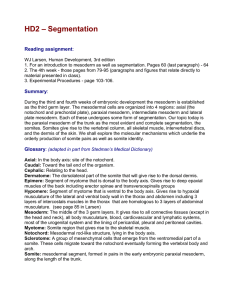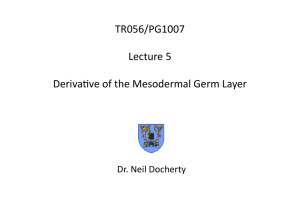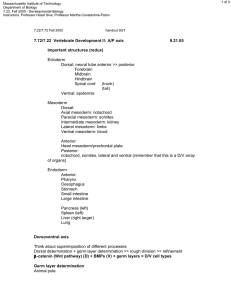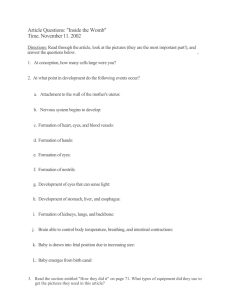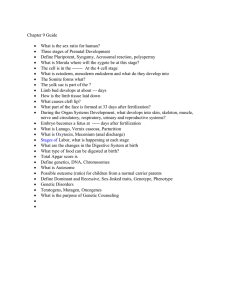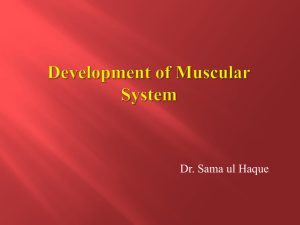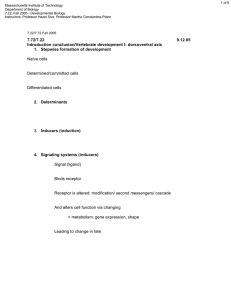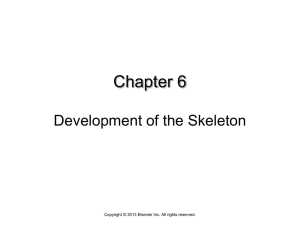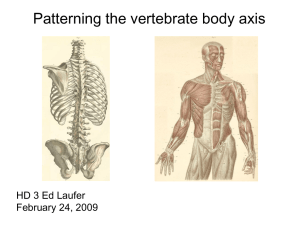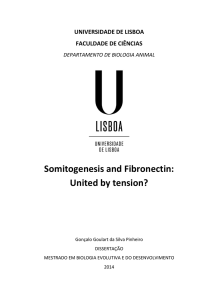– Segmentation HD 17 Reading assignment
advertisement
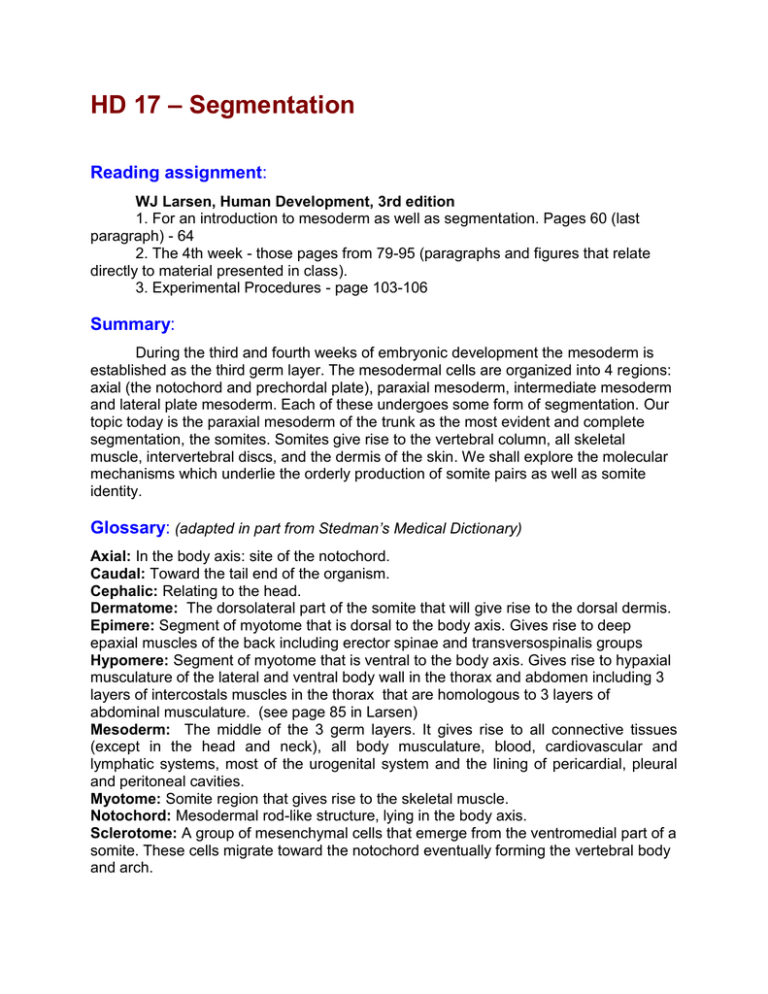
HD 17 – Segmentation Reading assignment: WJ Larsen, Human Development, 3rd edition 1. For an introduction to mesoderm as well as segmentation. Pages 60 (last paragraph) - 64 2. The 4th week - those pages from 79-95 (paragraphs and figures that relate directly to material presented in class). 3. Experimental Procedures - page 103-106 Summary: During the third and fourth weeks of embryonic development the mesoderm is established as the third germ layer. The mesodermal cells are organized into 4 regions: axial (the notochord and prechordal plate), paraxial mesoderm, intermediate mesoderm and lateral plate mesoderm. Each of these undergoes some form of segmentation. Our topic today is the paraxial mesoderm of the trunk as the most evident and complete segmentation, the somites. Somites give rise to the vertebral column, all skeletal muscle, intervertebral discs, and the dermis of the skin. We shall explore the molecular mechanisms which underlie the orderly production of somite pairs as well as somite identity. Glossary: (adapted in part from Stedman’s Medical Dictionary) Axial: In the body axis: site of the notochord. Caudal: Toward the tail end of the organism. Cephalic: Relating to the head. Dermatome: The dorsolateral part of the somite that will give rise to the dorsal dermis. Epimere: Segment of myotome that is dorsal to the body axis. Gives rise to deep epaxial muscles of the back including erector spinae and transversospinalis groups Hypomere: Segment of myotome that is ventral to the body axis. Gives rise to hypaxial musculature of the lateral and ventral body wall in the thorax and abdomen including 3 layers of intercostals muscles in the thorax that are homologous to 3 layers of abdominal musculature. (see page 85 in Larsen) Mesoderm: The middle of the 3 germ layers. It gives rise to all connective tissues (except in the head and neck), all body musculature, blood, cardiovascular and lymphatic systems, most of the urogenital system and the lining of pericardial, pleural and peritoneal cavities. Myotome: Somite region that gives rise to the skeletal muscle. Notochord: Mesodermal rod-like structure, lying in the body axis. Sclerotome: A group of mesenchymal cells that emerge from the ventromedial part of a somite. These cells migrate toward the notochord eventually forming the vertebral body and arch. Somite: mesodermal segment, formed in pairs in the early embryonic paraxial mesoderm, along the length of the trunk. Somitogenesis: The process by which the paraxial mesoderm becomes committed to a somite fate and then continues differentiation to a somite segment. The regular addition of somite pairs is dependent on cycle expression of selected genes. Somitomere: Metameric pattern in the preaxial mesoderm that precedes the development of a somite. Learning objectives: At the conclusion of this segment of the course you should be able to: 1. Define somitomere, somite, dermatomes, myotomes and sclerotomes and understand the anatomical outcome of the continued development of each. 2. Understand the steps in the process of somitogenesis with knowledge of specific gene families that are key to this process. 3. Understand how the combinatorial codes of Hox genes pattern of developing mesoderm. 4. Understand the clock-wave gene expression pattern that underlies somite maturation.
